Remembering “Gooch”
Posted on
08/22/22
Author
Jac Kovarik
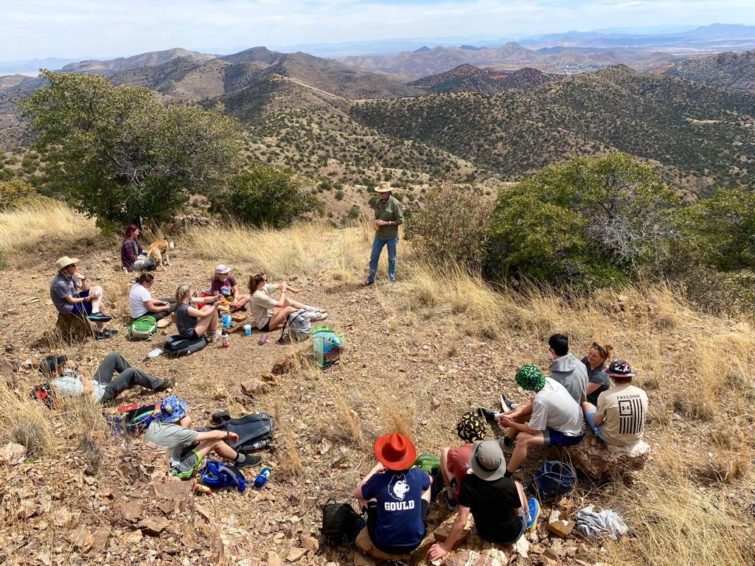
Gooch speaks to a student group from Bethel, Maine at Juniper Flats in Bisbee, AZ about his anti-mining activism in March 2022 (Photo by Jac Kovarik, Dragons Instructor).
The first time I met Glen “Gooch” Goodwin, it was a chilly brisk November morning in Patagonia, Arizona – about thirty minutes Northeast of Nogales in what is known as the “Sky Islands Region.” My students and I formed an introduction circle outside the Borderlands Restoration Network (BRN) dorm, as we often do when we meet a new face on a Dragons program.
“Call me Gooch and ask me any and all questions during our tour of the valley. No question is off limits!” announced Gooch as he handed out a few walkie talkies to my students. Gooch was a 4th-generation rancher from the San Rafael Valley. He was born and raised in a homestead near Parker Canyon Lake, about 7 miles north of the US/Mexico border as the crow flies. Gooch was tall and slim, wearing cowboy boots, boot cut jeans, and a wide brim cowboy hat. His hands were brown and wrinkled, covered in faded tattoos, and one of his hands had a short stub where a pinky finger used to be.
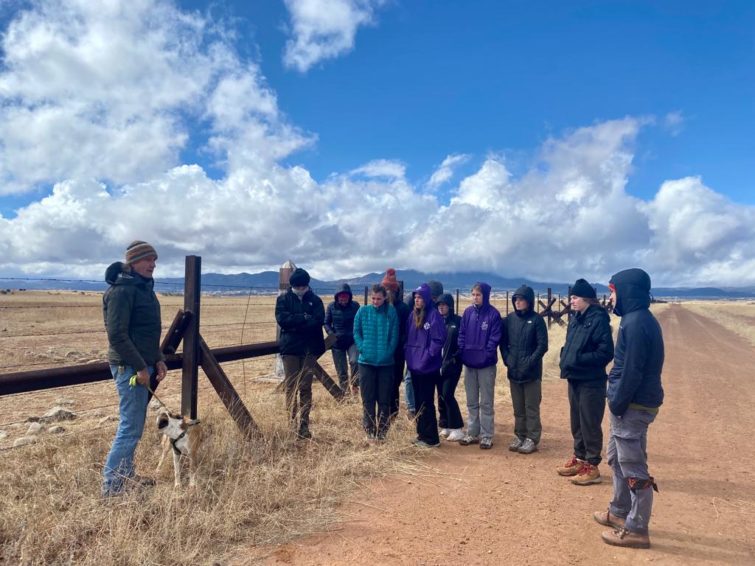
Gooch speaks to a student group from Kansas City about US border policy at the Bush-era border wall in the San Rafael Valley in February 2022 (Photo by Jac Kovarik, Dragons Instructor).
He shared with us that although he was BRN’s first ever employee, he had never before taken out a student group to the San Rafael Valley to share about his conservation and environmental activism work. “I guess we’ll just see how this goes,” he said a bit bashfully, with a crooked smile. We piled up in our 15-passenger van and attached the walkie talkie to the aux cord. As we followed Gooch’s 1980’s Tacoma down Harshaw Road towards the valley, my students began firing off questions.
What are all those trucks with orange flags attached to their roofs? Those are pilot vehicles for the South32 Hermosa mine, an exploratory zinc mine that has just recently begun breaking ground in the Patagonia Mountains. The mine is bound to cause irreparable damage to the Santa Cruz watershed, but of course South32 – an Australian multinational company – has a shiny new visitor center in downtown Patagonia and is funding community events around town. We’ll talk a lot more about how extractive industries pander to and prey on vulnerable working class communities when we drive by the mine later on our tour – and how some version of this is most likely playing out where you are from as well!
What are those giant cell phone towers for? Those are actually US Border Patrol towers! They are scattered all over the valley and are completely obsolete: migrants know what paths to take to not be in view of the towers. But of course, the border is designed to make money, not to keep migrants out. That tower over there is lovingly referred to as “Gooch’s Nob” by CBP (Customs & Border Patrol) because I would often hike up there to make phone calls when I was working for the Wildland Fire Forest Service, hahaha.
What is that strip of bright green along the valley? Those are the mighty cottonwoods! In the Sonoran Desert, cottonwoods grow wherever there is a consistent water source. Those trees are lining the headwaters of the Santa Cruz River, which runs south across the border from here, loops up north through the city of Nogales across the border again, and runs north all the way to the city of Tucson. The river knows no borders.
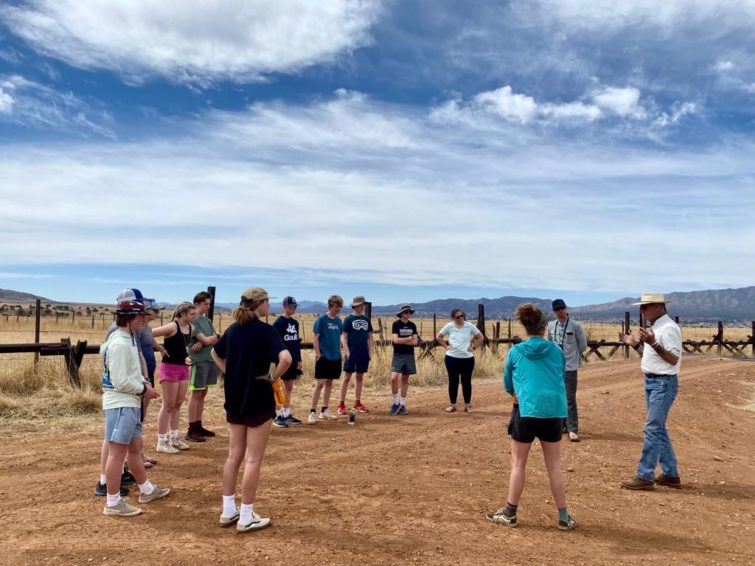
Gooch with a group of high school freshmen from Bethel, Maine at the Bush-era border wall in the San Rafael Valley in March 2022 (Photo by Jac Kovarik, Dragons Instructor).
Throughout the day, Gooch took us on a loop through the valley, chalk full of teachable moments. We laid our hands on the Bush-era border wall as Gooch described how he has seen migrant crossings and border militarization increase dramatically in his homeland, first because of NAFTA and secondly because of 9/11. We took a peek at the footage on some of Gooch’s hidden wildlife cameras, as Gooch explained that both the construction of the border wall and the continued extractive mining of the region continues to threaten the lives of migratory big cats that roam these sacred lands. The Patagonia Mountains are the northernmost migratory point for jaguars in the Americas, but their sightings are becoming few and far between.
We stopped for lunch at the old schoolhouse in Lochiel, and Gooch shared with us his personal journey of renouncing cattle ranching and entering conservation and anti-border wall activism, despite the fact that it cost him many familial ties and quite a few death threats to boot. Breaking from his family and his ranching community’s stance towards the land and towards migrants was no easy journey, but Gooch emphasized that he would not have had it any other way.
He told us the story of how he lost his pinky finger during a freak wrangling accident, with a twinkle in his eye. My students and I laughed along as we absorbed more information about the border industrial complex, extractive industries, and frontlines organizing than we ever could have in a classroom. I could not believe this was the first time Gooch had taken a student group out to the valley – as I watched him glow while intimately connecting with my students, I felt deep in my heart and body that Gooch was born for moments like these.
After that first November 2021 encounter, I made sure to bring every student group I led in Southern Arizona to Gooch. Over the span of less than a year, Gooch touched the lives of students from Kansas City, Missouri; Bethel, Maine; Seattle, Washington; Boston, MA; Nigeria; Zimbabwe; and more. They had all come to Arizona to learn about the people, the land, and local resistance to colonization and capitalism. Gooch always left my students with a hunger to explore how they can become involved in environmental justice movements in their home communities, and with a fire in their souls to inform their activism with vulnerability, courage and love.
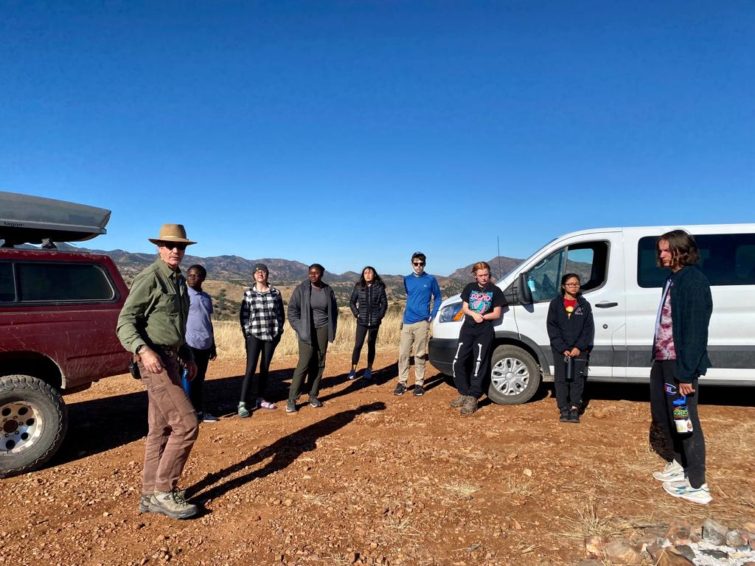
Gooch with a group of college freshmen from Tufts University in the San Rafael Valley in November 2021 (Photo by Jac Kovarik, Dragons Instructor).
When I heard of Gooch’s sudden passing last week, my heart immediately leaped to all of the students he had impacted and inspired. Gooch was the kind of person who held nothing back. No topic was off-limits, including the grittier edges of his journey. He encouraged my students to never stop growing and learning, even if the process is sometimes painful and raw. He was open about how his own journey of renouncing machismo, violent settler practices, and toxic masculinity was central to his journey of becoming an environmental activist in the Southeastern Arizona borderlands.
As we honor the life of Glen “Gooch” Goodwin, I invite us to reflect on how we can carry on his legacy: by fighting for justice in our own communities, and embodying his belief that it is never too late to keep learning, growing and transforming. Gooch lives on as an incredible example for anyone who wishes to fight for a better world, beginning with self-transformation and organizing within our families and home communities. He encourages us to take up the environmental fight in our daily lives in whatever ways are accessible to us now, and to do so with kindness for our communities, and love and care for ourselves.
I encourage anyone who is able to donate to one of these organizations in Gooch’s legacy, all of which were very near and dear to his heart and to his activism:
- Patagonia Area Resource Alliance (PARA)
- Borderlands Restoration Network (BRN)
- No More Deaths/No Más Muertes (NMD)
- Sea Shepherd
In love and solidarity,
Jac Kovarik
South and North America Instructor, Where There Be Dragons

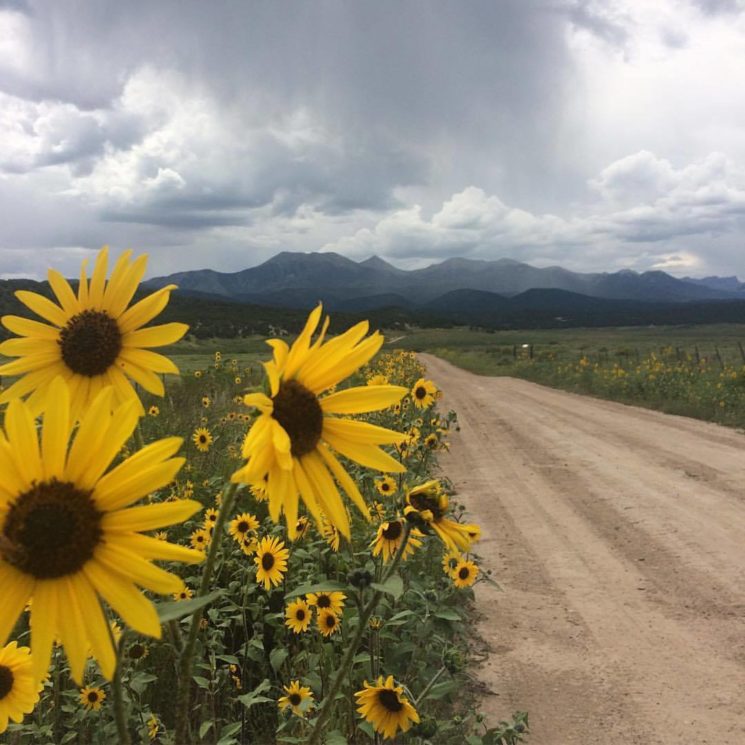
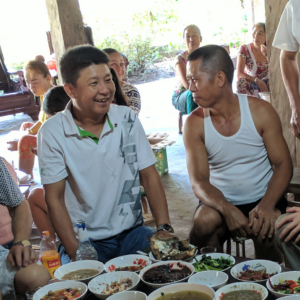
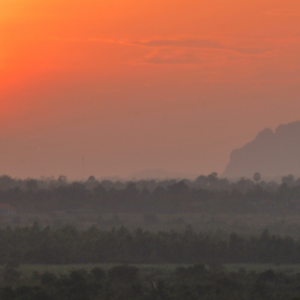
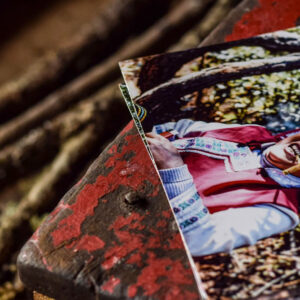
Thank you Jac. We are saddened to hear the news of Gooch’s passing. Our students loved the time they spent with Gooch. He inspired them and became an instant legend on all of the Gould trips. He will be missed.